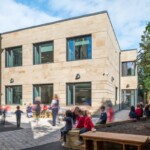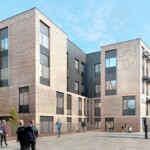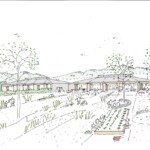Edinburgh Academy James Clerk Maxwell Science Centre News, 42 Henderson Row, Architecture Images
Edinburgh Academy Science Centre Building
School Building on Henderson Row design by Lorn Macneal Architects
post updated 3 August 2021
Edinburgh Academy Building
Edinburgh Academy Science Centre
Address: 42 Henderson Row
Date built: 2006
Architects: Lorn Macneal Chartered Architects
Building Construction Cost: £3.2m approximately
THE EDINBURGH ACADEMY : JAMES CLERK MAXWELL SCIENCE CENTRE
The James Clerk Maxwell Science Centre is a new building at The Edinburgh Academy, Henderson Row, and combines three Science departments and a lecture theatre.
Science facilities were previously in various separate locations across the campus, with each Department in need of significant investment. This is the School’s first flagship building project in over two decades, and celebrates the achievements of its former pupils, in particular, James Clark Maxwell, while providing a facility for the next generation of scientists.
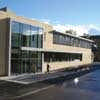
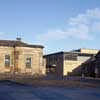
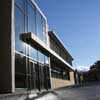
images courtesy of architects practice
The first chemistry building had been built on the same site in 1890 when formal science lessons commenced. This evolved over time resulting in an ad-hoc building which lacked presence in the rear yard; there were too many over-sized labs, with insufficient natural daylight.
The new building is arranged on two floors to accommodate Chemistry, Physics, and Biology departments in an efficient unit with shared facilities. Each department has three laboratories and a preparation room, with shared staff resources. A new Biology Garden is located to the rear, to provide a green space for practical experiments. A multi-purpose lecture theatre is fitted with bleacher seating, a bespoke lectern and state-of-the-art technology to provide the School with a flexible space that can function as an examination hall or lecture/teaching space for the school and community.
The diagram of the building is generated by the boundary wall along the east of the site; the laboratories are arranged along the west face of the building addressing the yards and maximising daylight, while the circulation space is situated to the rear. The ground floor level ramps down alongside the boundary wall to follow the natural contours of the site and provide the taller ceiling height to the lecture theatre at the North end.
The original east boundary wall is engineered into the building design to create a dramatic backdrop for the ground and first floor circulation spaces with James Clerk Maxwell’s equations displayed in relief. The double height foyer penetrates the depth of the building, and rooflights allow light to flood into the space. A rhythm of pyramidal rooflights illuminates the rear corridor with triangular shapes of sunlight projecting the sun’s path throughout the year. The first floor peels away from the boundary wall to allow light to penetrate down to the ground floor ramp.
A large 4 metre long aquarium tank in the ground floor foyer provides an educational focus, while an overhead bridge links the Physics and Chemistry Preparation rooms on the first floor.
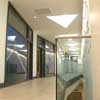
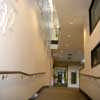
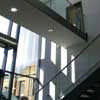
image courtesy of architecture practice
The main foyer rooflights also provide automatic vents for the passive natural ventilation system; temperature sensors at high level trigger the rooflights to open when it gets too hot, and the teachers can manually control the classrooms with opening windows to the outside and to the corridor.
The 52 metre long rear corridor is broken up by the central foyer and the classroom walls which are cranked in plan to provide spill out spaces from the classrooms. Each classroom door screen includes a digital photograph panel which relates to the science subject of that classroom and glazing above to allow light to spill in from the corridor. The classrooms have windows stretching from the lab benches to the ceiling to maximise on natural daylight, while the combinations of fixed solar shading and solar blinds prevent glare from the sun and allow black-out or grey-out as required by each department.
The new building has a sandstone base with a glazed upper storey, taking references from the existing adjacent buildings in the yards. The stone frontage steps up to frame the main entrance glazed screen which is accessed off the yard to the rear of the main hall. Large steely grey cladding panels complete the envelope to the north and east of the building, and wrap round the south elevation to interlock with the stone. This provides a composition which allows the new building to sit sensitively behind the William Burn Hall and front yard.
Edinburgh Academy Science Centre wins at EAA Awards : EAA Awards 2007
Edinburgh Architecture
Lauder Road house design by Lorn Macneal Architects
Edinburgh Academy : Buildings
Comments / photos for the Edinburgh Academy Science Centre Architecture design by Lorn Macneal Architects page welcome
